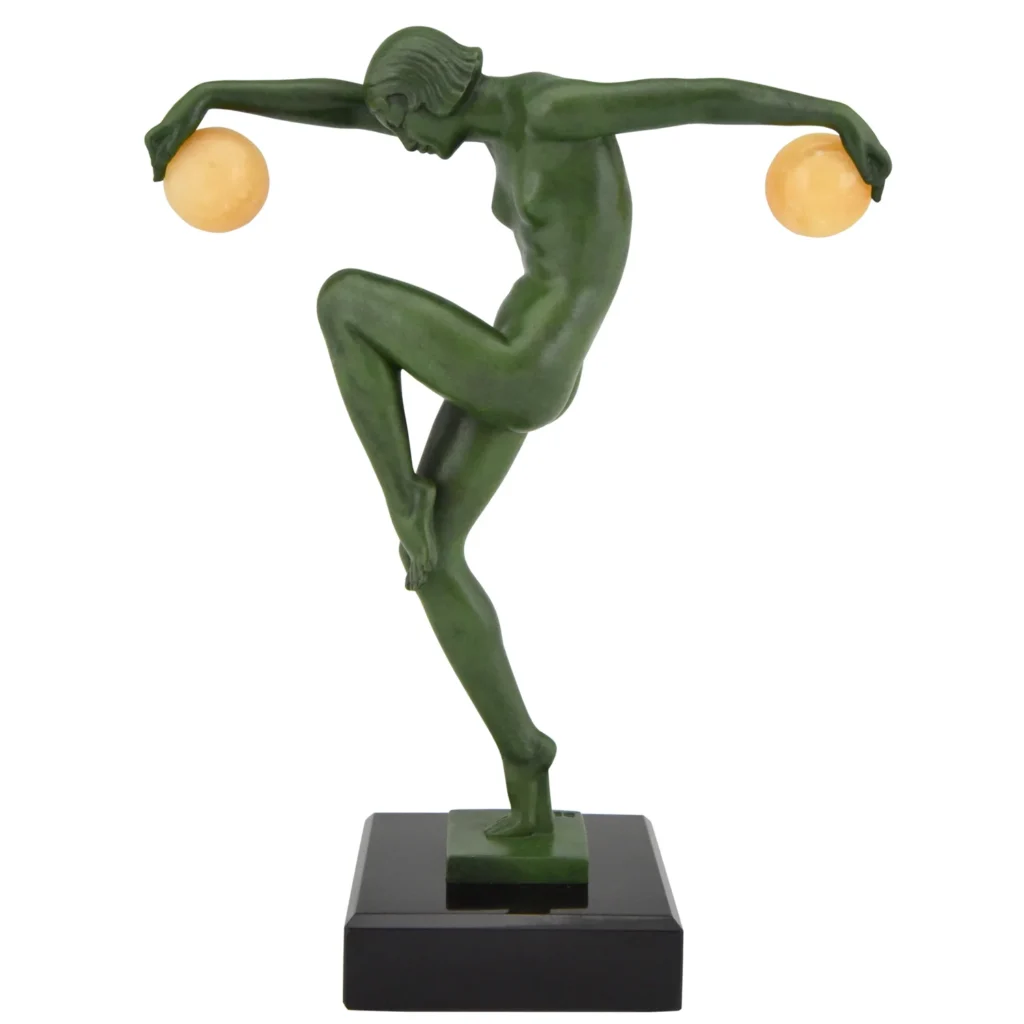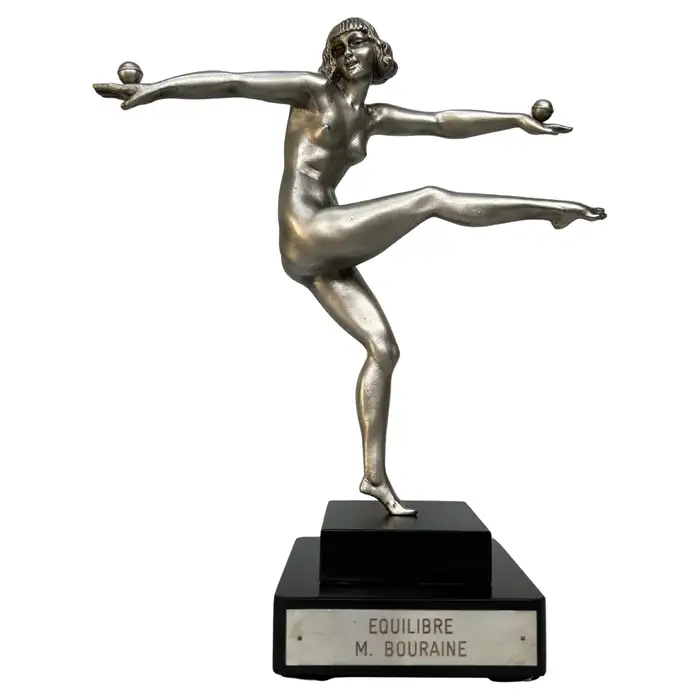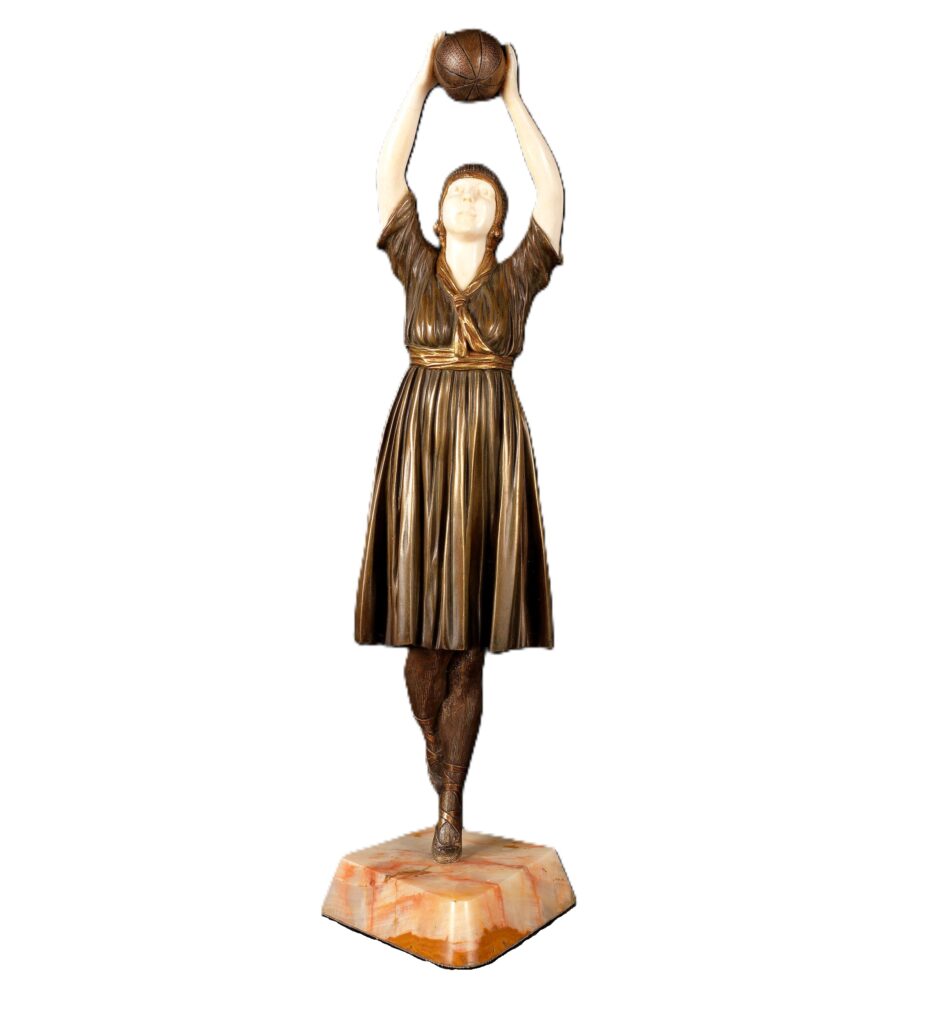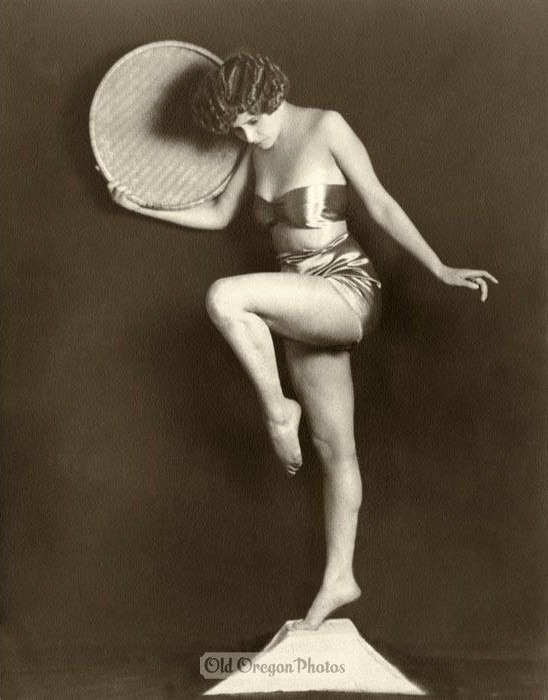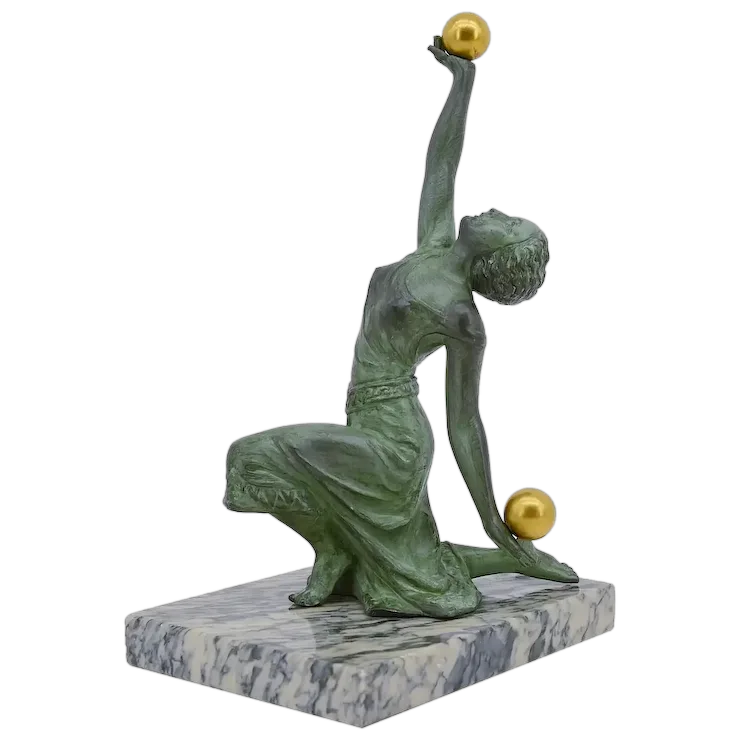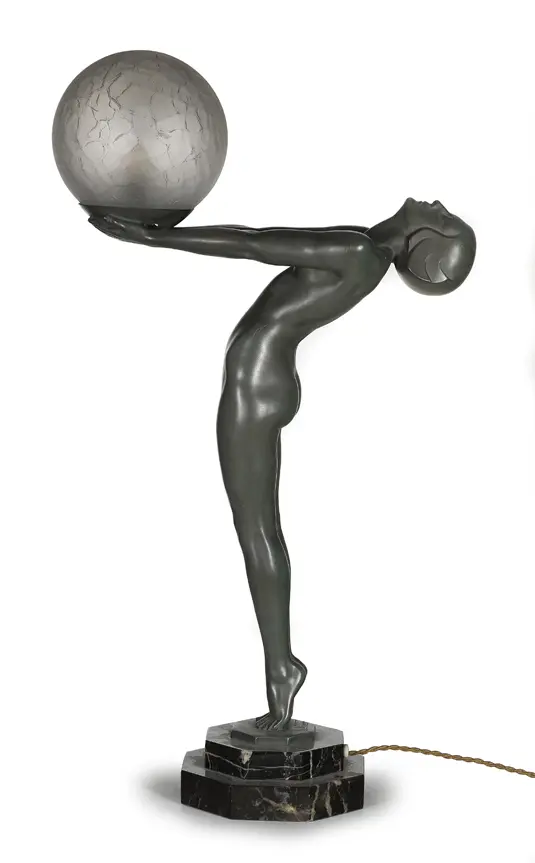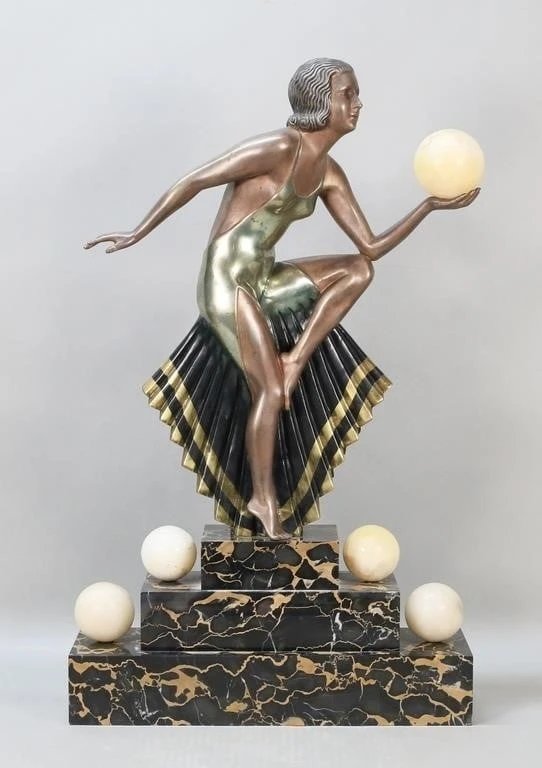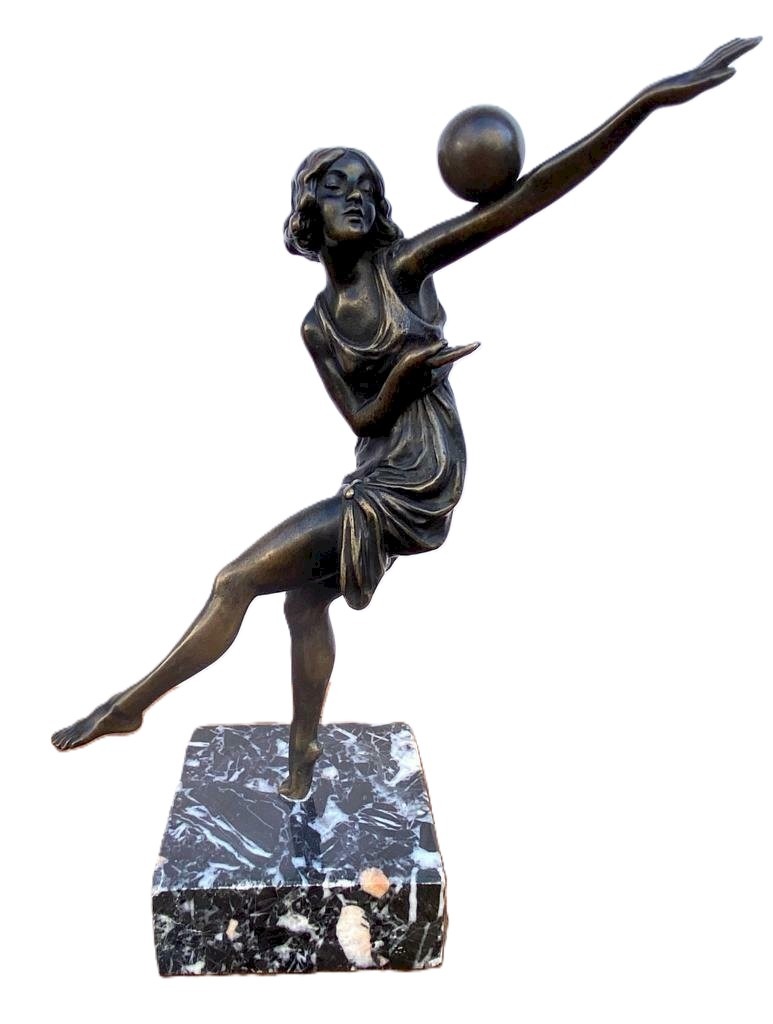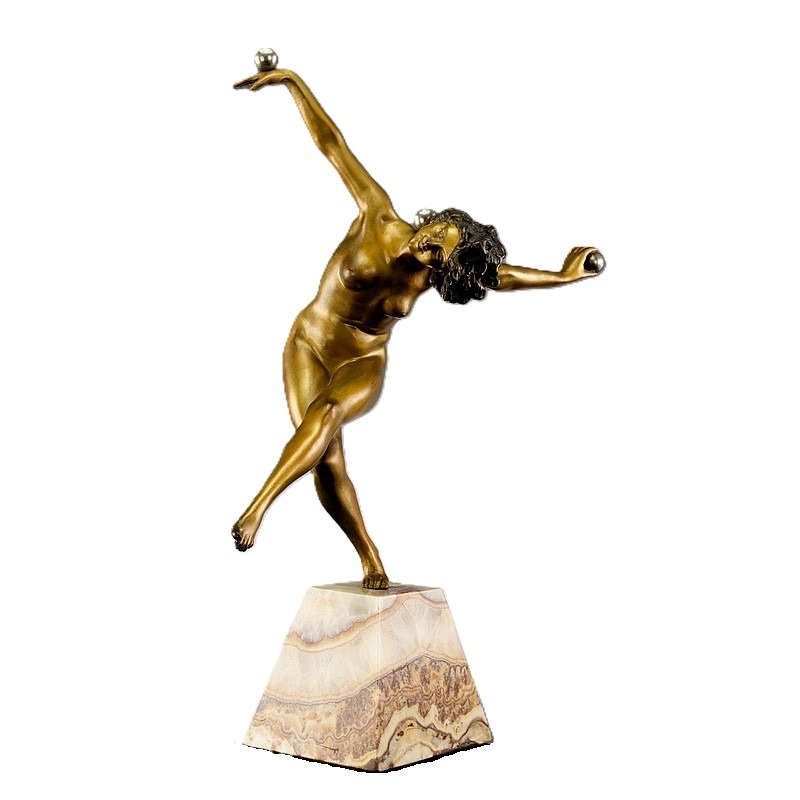The 1920s, a decade of cultural explosion following the First World War, brought us the likes of F. Scott Fitzgerald's El Gran Gatsby The Great Gatsby, the syncopated rhythms of jazz, bootlegging gangsters and speakeasies with enough gin and champagne to fill the Titanic. It also introduced the world to the visual splendor of Art Deco, a glittering ode to speed, sex, and geometry that combined perfectly as a middle finger to the past. This movement, with its roots in the post-war yearning for modernity, encapsulated the era's glamour accented by a love of geometry, bob cuts, two toned shoes and the daring flappers.
Art Deco sculptures, in particular, became a canvas for this dynamism, often featuring dancers balancing spheres on their arms. This motif, both fascinating and intriguing, begs the question: why did artists become so obsessed with adding these balls to their creations? Was it a metaphor for the fragile economy? A coded message from avant-garde rebels? Or just a horny fascination with bodies and balls? Let's find out.
The Roaring Twenties
The 1920s were a time of economic boom and social liberation, where the world sought to shake off the shadows of war. Art Deco, emerging as a celebration of this new age, was characterized by its use of luxurious materials like bronze and ivory, and its embrace of geometric patterns and streamlined forms. Dancers, embodying the energy of the Jazz Age, were a popular subject, their movements captured in sculptures that seemed to dance off the marble bases.
The motif of dancers with spheres stands out for its peculiarity. These sculptures often depict nude or semi-nude figures, their bodies frozen in a moment of balance, with spheres resting on their arms, hands, or even being juggled. The visual impact is striking: the smooth, perfect curve of the sphere contrasts with the fluid lines of the dancer, creating a composition that is both harmonious and dynamic.
Why the Obsession?
To understand this trend, we must delve into the possible reasons, drawing from art historical research and the context of the era:

The act of balancing a sphere requires considerable skill and poise, which aligns with Art Deco's fascination with athleticism and mastery. These sculptures often capture a moment of perfect equilibrium, showcasing the dancer's control and grace. For instance, a Max Le Verrier sculpture, depicting a dancer balancing on one leg while holding two balls, exemplifies this, with the green patina and Belgian black marble base enhancing the sense of balance.

Art Deco was heavily influenced by geometric shapes, and the sphere, as a fundamental form, would have appealed to the movement's aesthetic. Its clean, simple shape contrasts with the often intricate and stylized figures, creating a visually striking composition. This emphasis on geometry is evident in works like those by Marcel Bouraine, known for his art metal sculptures, including a nude dancer with a ball titled Equilibre.

While direct evidence of dancers in the 1920s routinely performing with large spheres is limited, the Art Deco movement drew heavily from the world of theater, cabaret, and the Ballets Russes. It's plausible that some avant-garde performances incorporated such props for visual effect or symbolic representation. Sculptors like Demetre Chiparus were known to be inspired by specific dancers and performances, suggesting a link to the stage.
The spheres could also be a stylized representation of other props like hoops or even part of the dancer's costume, simplified into a geometric form consistent with Art Deco style. Some sculptures depict dancers with rings or hoops, suggesting a broader interest in circular props, which might have evolved into the sphere motif in artistic interpretation.

The sphere itself holds various symbolic meanings, such as unity, perfection, or even the world. In the context of dance, it might represent the dancer's world, their focus, or a sense of harmony and balance within their performance. This symbolism adds a layer of depth, making the motif more than just a visual element but a philosophical statement.
The Artists Who Made Spheres a Vibe
Several artists from the Art Deco era contributed to this motif, each bringing their unique touch:







These artists, through their works, helped cement the dancer-with-spheres motif as a hallmark of Art Deco sculpture, each piece a testament to the era's artistic innovation.
Be the Dancer and Roar like the 1920's
Let’s face it—we’re all still chasing that 1920s high. The thrill of reinvention. The audacity to dance naked in the moonlight. Those spheres? They’re a mindset. They invite us to consider the interplay between form and function, and the enduring appeal of geometric perfection. For collectors and enthusiasts, owning a piece like this is to hold a piece of the Roaring Twenties, a time of extravagance and creativity.
The beauty of Art Deco lies in its ability to capture a moment in time, blending elegance with innovation. The motif of dancers with spheres, with its layers of meaning and visual allure, is a perfect example. Now go and explore these timeless treasures and bring a piece of history into your home.
Add a touch of this Gatsbyesque extravagance to your life
No se encontraron resultados
Puedes probar vaciar cualquier filtro o dirígete a nuestro inicio de la tienda


